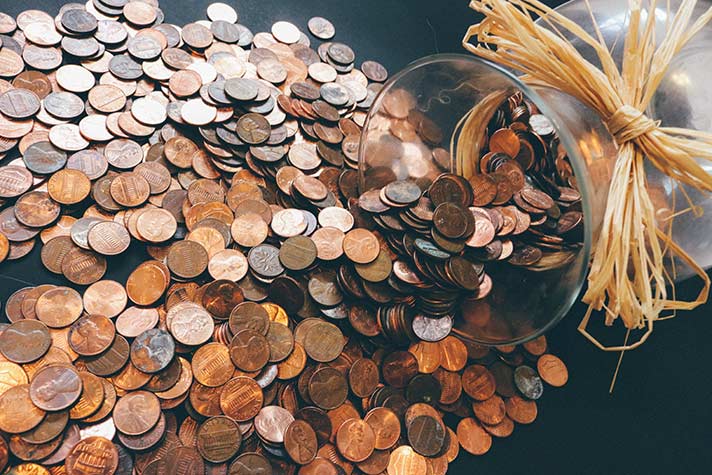On Money & More – October 2022
To help combat persistently high inflation rates coming out of the pandemic economy, the Federal Reserve has increased the short-term lending rate from essentially 0% to 2.25% this year. Even more rises are anticipated, with the majority of future bets currently predicting that we will end the year with a rate of 4% – 4.25%. This adds up to seven more quarter-point increases in the next few months. Investors are well aware that the Fed’s hawkish repositioning has disrupted stocks, bonds, lending rates (such as mortgages), and savings rates.
Out of this disruption, there is an opportunity to assess your savings positions and identify ways to create more yield. For example, some savings rates haven’t yet moved up. As of September 6th, we’ve seen banks that are offering rates as low as 0.05% for money placed in basic savings accounts and 0.40% for “high yield” savings accounts that require over $100,000 in deposits to qualify. Meanwhile, 1-year CDs listed through Charles Schwab are consistently over 3%. While this comparison is apples and oranges (CDs often have lockup provisions and early liquidations penalties), the point is to know where your cash is and what it is doing for you. With inflation running hot, getting return from your cash is as important as ever.
We prefer positions that are fully liquid and daily tradeable. For example, purchased money market funds often have yields over 2% that have no lockup period, liquidation penalties, or price fluctuations. A mild amount of risk can increase yields even more. Consider that 1-year and 2-year Treasuries are yielding around 3.9% and 3.5% currently (note that these positions do have some market price volatility, which will impact effective yield). For client’s cash equivalents, we often utilize various short-term bond funds that provide current yield currently ranging from 2.5% to over 4%. These positions also have price volatility but provide solid income without getting too extended on risks such as credit quality or duration. Duration is a fixed income term that measures the time needed to be fully paid out for the price paid for the security.
Having some of your money held in standard savings accounts can be prudent, especially any needs for immediate cash. But, in this high inflation environment there are opportunities to help combat higher prices with higher-yield instruments that do not have significant market or rate risks. It is worth examining your current cash balances to review what rates you are currently receiving. With this year’s higher interest rates, you just might be leaving money on the table.
All opinions and data included in this commentary are as of September 14, 2022 and are subject to change without notice. The opinions and views expressed herein are of Cutler Investment Counsel, LLC and are not intended to be a forecast of future events, a guarantee of future results or individual investment advice. Nothing herein should be construed as tax advice. This article is provided for informational purposes only and should not be considered a recommendation or solicitation to purchase or sell securities. This information should not be used as the sole basis to make any investment decision. The statistics have been obtained from sources believed to be reliable, but the accuracy and completeness of this information cannot be guaranteed. Investing involves risk, including the potential loss of principle. Neither Cutler Investment Counsel, LLC nor its information providers are responsible for any damages or losses arising from any use of this information.

 Matthew Patten is CEO and Investment Portfolio Manager at Cutler Investment Group. He is a graduate of Jacksonville Elementary School and South Medford High School. Matt earned BA degrees in Economics and Environmental Geo-Sciences from Boston College and a MBA from the University of Chicago.
Erich Patten is President and Chief Investment Officer at Cutler Investment Group. He is a graduate of Jacksonville Elementary School and South Medford High School. Erich earned a BS in Economics from the Wharton School, University of Pennsylvania, and a Masters in Public Policy from the University of Chicago.
Matthew Patten is CEO and Investment Portfolio Manager at Cutler Investment Group. He is a graduate of Jacksonville Elementary School and South Medford High School. Matt earned BA degrees in Economics and Environmental Geo-Sciences from Boston College and a MBA from the University of Chicago.
Erich Patten is President and Chief Investment Officer at Cutler Investment Group. He is a graduate of Jacksonville Elementary School and South Medford High School. Erich earned a BS in Economics from the Wharton School, University of Pennsylvania, and a Masters in Public Policy from the University of Chicago.